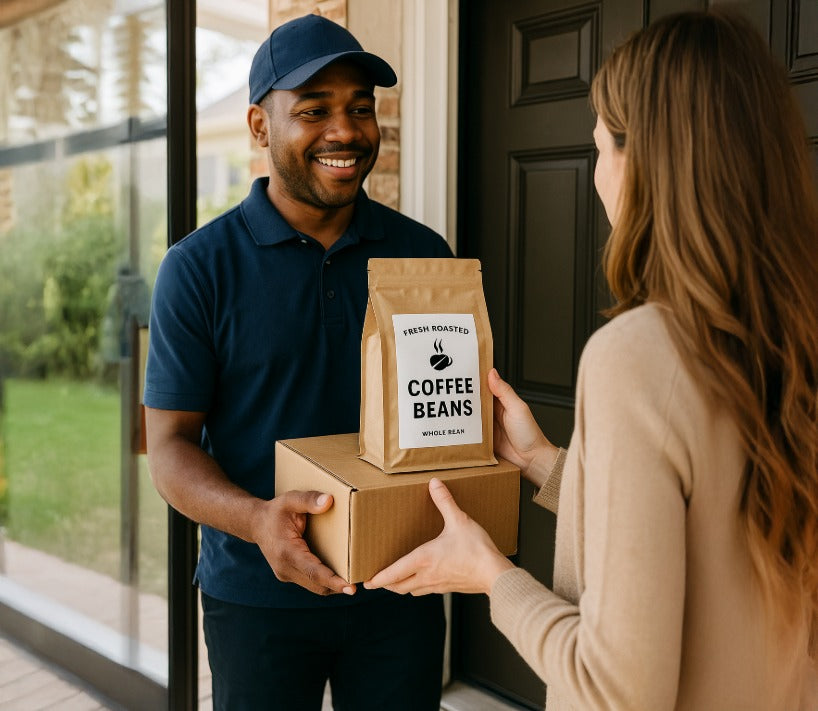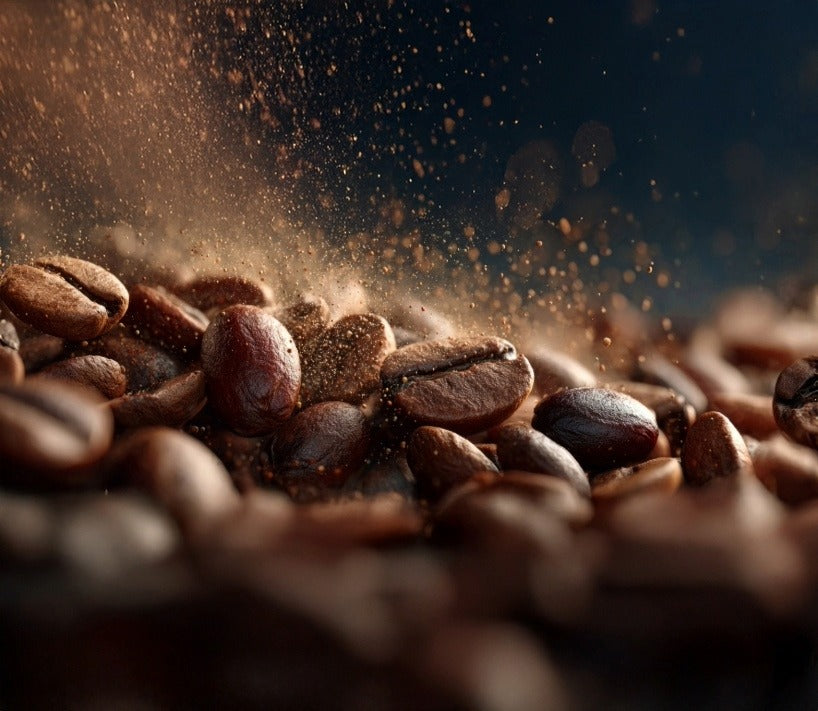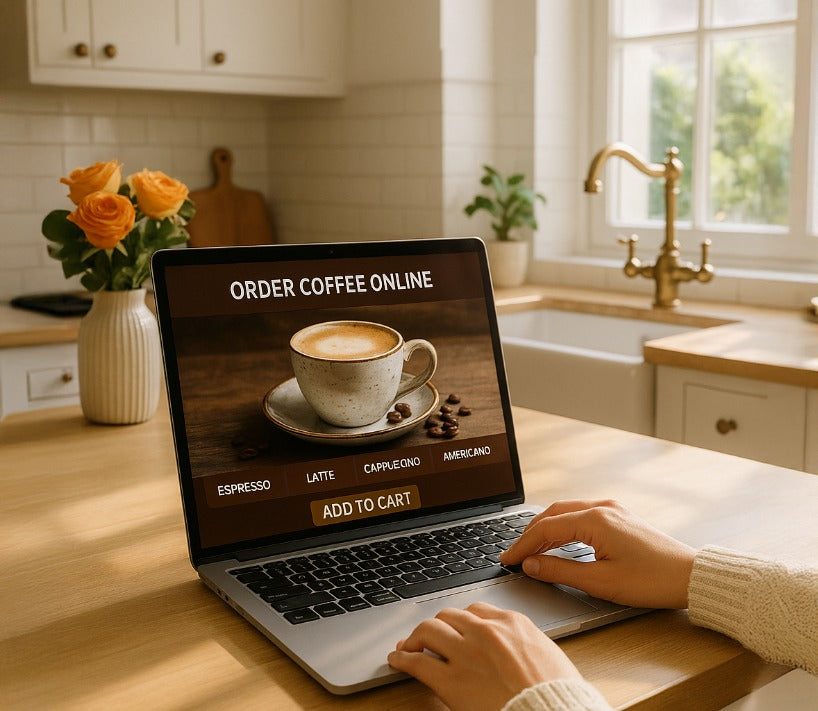“Bean” There, Done That: What Exactly Is Specialty Coffee (and Why Is It Nothing Like the Regular Stuff)?
May 18, 2025 5 min read
“Bean” There, Done That: What Exactly Is Specialty Coffee (and Why Is It Nothing Like the Regular Stuff)?
Why You Should Care Before Your Next Pour-Over
I’ve lost count of how many times friends have asked me, “Hey, what’s the big deal about specialty coffee? Isn’t it just a fancy label so roasters can charge extra?” Spoiler alert: it’s not—and if you love getting the best craft coffee at home (or you’re hunting for the best coffee to buy online), understanding the difference will make every sip taste that much sweeter. Buckle up, fellow caffeine crusader. By the time we’re done, you’ll know exactly why specialty coffee earns those bragging rights—and how to spot it before you accidentally settle for ho-hum beans that leave your mug (and taste buds) wanting more.
Breaking Down the Buzz (in Fun-Sized Sips)
1. A Quick Crash Course: Grading Coffee Like a School Exam
Think of specialty coffee as the valedictorian of the bean world. The Specialty Coffee Association (SCA) has a standardized 100-point grading scale. If a batch scores 80 points or higher, it’s deemed “specialty.” Anything lower? Welcome to the realm of “commercial,” also known as “regular coffee.”
Why the high marks? Certified Q-graders (yes, professional coffee tasters exist—dream job, right?) evaluate:
-
Fragrance & Aroma (how good it smells before and after brewing)
-
Flavor & Aftertaste
-
Acidity & Body
-
Uniformity & Clean Cup (no weird defects or off-flavors)
Only beans passing with honor-roll numbers get the gold star.
Pro tip: If you want the best tasting whole bean coffee or good coffee to drink black, look for roasters who share their scores openly. Transparency is a hallmark of the specialty scene.
2. Farm-to-Mug Traceability
Your average supermarket tin might list “100% Arabica.” Great. Where was it grown? Who harvested it? No clue. Specialty coffee, on the other hand, loves to brag about its roots—think single-origin lots, micro-lots, even down to a specific hillside and its exact altitude.
Why it matters:
Different altitudes, soils, and micro-climates create wildly different flavor notes—blueberry pastries from Ethiopia, dark chocolate and cherry from Guatemala, sugarcane sweetness from Colombia. Traceability lets you taste those nuances rather than a generic “coffee-flavored coffee.”
3. Harvest, Process, Repeat (with Surgical Precision)
Regular coffee is often strip-picked—imagine raking every cherry off the tree whether it’s ripe or not. With specialty coffee, pickers return multiple times, plucking only the ripe red cherries each pass. Afterward, processing methods (washed, natural, honey, anaerobic—sounds like a kombucha brewery in here!) are dialed in to coax out desired flavors.
That precision = fewer defects and that head-turning flavor clarity you brag about on social media when friends ask why your best espresso beans taste like strawberries dipped in caramel.
4. Roasted to Order vs. Roasted to Sit
Most commercial roasters produce coffee in giant batches built to survive months (or years) on warehouse shelves. Specialty roasters, however, roast in small batches—often after you buy—so the beans arrive days old, not months. If you’ve ever Googled “where can I buy fresh coffee beans near me,” you’ve experienced that eureka moment when you crack open a bag roasted last Tuesday and instantly smell cocoa, plum, or jasmine.
Freshness isn’t marketing fluff; volatile aromatics fade quickly. Same-day or weekly roast schedules protect those flavors so your home brews taste like the farmers, processors, and roasters intended.
5. Brewing Freedom (a.k.a. No Extra Sugar Required)
Because specialty beans are high-scoring and freshly roasted, many folks drink them black—or at least with far less cream and sugar. If your goal is good coffee to drink black that doesn’t punch your palate with bitterness, specialty is where it’s at. Even darker roasts, when done right, offer sweetness and balance instead of acrid haze.
Digging Deeper – Specialty vs. Regular, Stat by Stat
| Feature | Specialty Coffee | Regular Coffee |
|---|---|---|
| SCA Score | 80+ (Q-graded) | < 80 (not graded) |
| Traceability | Down to farm/lot | Usually unknown |
| Harvest Method | Hand-picked ripe cherries | Strip-picked/mixed |
| Processing | Controlled, varied | Bulk, cost-driven |
| Roast Approach | Small batch / roasted to order | Large industrial runs |
| Shelf Life | 2–4 weeks for peak flavor | 6–12 months (stale tolerant) |
| Typical Flavor | Nuanced, origin-specific | Generic, often bitter |
| Price | Higher—but value = flavor | Cheaper per pound |
How to Level Up Your Home Coffee Game
Great, you’re convinced specialty coffee is worth the hype. Here’s your action plan:
1. Check the Roast Date (Not Just the “Best By” Date)
A roaster offering the best craft coffee online should stamp the actual roast date, not a vague future “expires” line. Aim to brew within 10–30 days for peak flavor.
2. Look for Transparency
Good roasters proudly share origin details, variety, altitude, and processing method. If you spot that info, you’re on the right track to find the best specialty coffee online.
3. Embrace Small Bags and Rotate
Buy 8–12 oz bags instead of Costco-sized sacks. You’ll finish beans while they’re still lively. Rotate origins—one bag Ethiopia natural, next bag Colombia washed—so your palate never gets bored.
4. Grind Right Before Brewing
Whole beans hold flavors longer. Invest in a burr grinder for consistent particle sizes—and yes, that’s your ticket to café-quality in PJs.
5. Dial in Your Brewing Recipe
Pick one method (pour-over, AeroPress, French press, espresso) and tweak one variable at a time—grind size, dose, water temp—to find your sweet spot. Remember, the goal is extracting those delicate origin notes, not drowning them.
FAQ Lightning Round (Because I Know You’re Thinking It)
-
“Is specialty coffee always light roast?”
Nope. Plenty of specialty beans get medium or even medium-dark treatment; they just aren’t roasted to oblivion. The hallmark is balance and clarity, not “how pale can we go?” -
“Do I need expensive gear?”
A good burr grinder and a simple pour-over dripper can outperform a flashy but poorly designed machine. Focus on consistency, not bells and whistles. -
“How do I store beans?”
Opaque, airtight container. Room temp. Skip the freezer unless you’re stockpiling for months. (Then vacuum-seal first!) -
“What if I actually prefer darker or flavored coffee?”
That’s fine! Specialty doesn’t dictate taste preferences—it simply offers higher-quality ingredients. There are fantastic darker roasts and even natural flavor process options within the specialty realm.
Putting It All Together (Your Cup, Upgraded)
So, what exactly does “specialty coffee” mean, and how is it different from regular coffee?
-
Quality: Scored ≥ 80 by experts.
-
Traceability: You know the farm, often down to the plot.
-
Processing & Harvest: Meticulous, flavor-first.
-
Freshness: Roasted in small batches, shipped immediately.
-
Taste: Nuanced, complex, naturally sweet—and yes, worth every penny if you seek the best craft coffee online.
If you’re perched at home Googling best espresso beans or dreaming of the top coffee delivered to your door, specialty coffee is your passport to a whole new flavor continent. Whether you’re shopping for a gift for coffee lover friends (coffee beans as a gift = instant hero status) or simply want to elevate your own morning ritual, understanding the specialty difference ensures you never waste another dollar—or moment—on forgettable beans.
Go forth, experiment, and more importantly: enjoy the journey. Because coffee isn’t just a beverage; it’s a delicious exploration of geography, chemistry, and the joy of tiny daily rituals. Now brew something amazing and toast to your new specialty-savvy self!
Also in Best Coffee To Buy Online Education

Best Fresh Roasted Coffee Delivery Online
November 28, 2025 4 min read
I roast the best tasting coffee at home for you! I use 100% electric equipment, so no hydrocarbons here. Best fresh roasted coffee delivery starts with high-scoring specialty coffee online.

Which Roaster Makes Better Coffee: Gas or Electric?
November 27, 2025 4 min read
Why electric drum roasters produce cleaner, sweeter, more consistent coffee—especially the kind you want when buying fresh roasted coffee beans online or trying to make the best tasting craft coffee at home.

Biggest Coffee Buying Mistake at Home
November 26, 2025 4 min read
Learn why the roast date matters and how to buy fresh, high-quality specialty coffee online. No guesswork when you order coffee online with me. I only stock, roast, and process the best tasting craft coffee at home. I am YOUR personal roaster.
